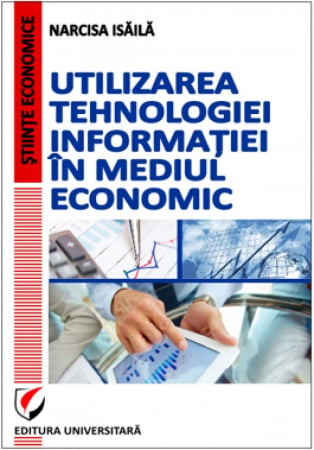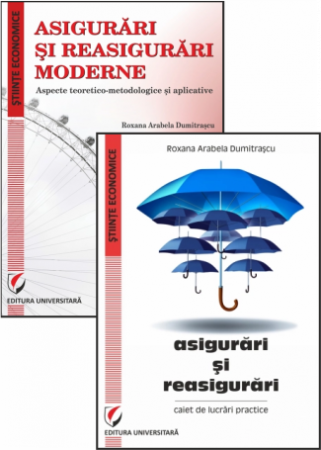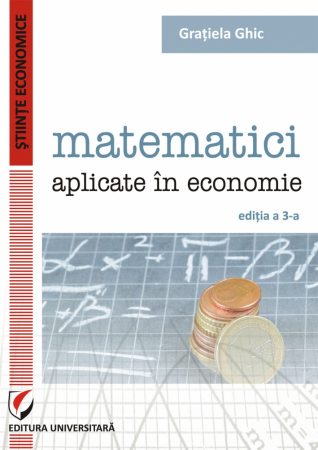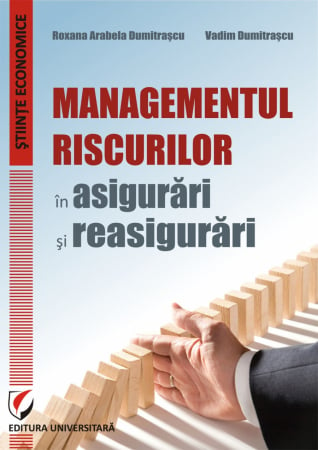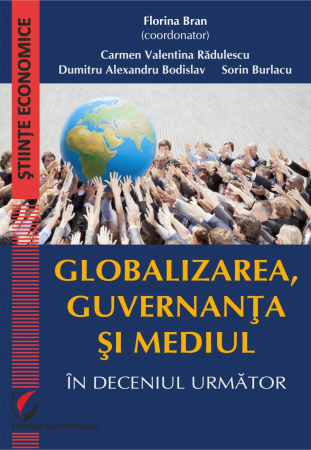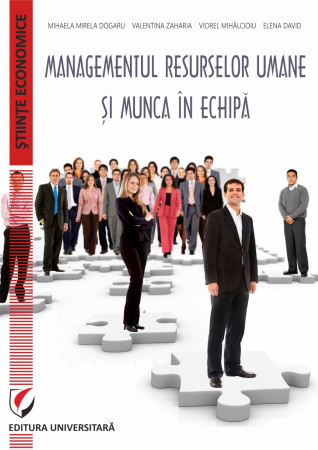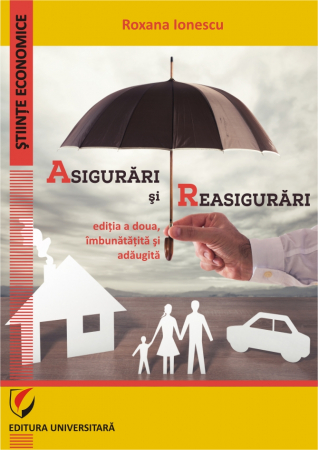6359.png) Financial-Accounting Audit. Methodological Approach and Practical Cases - Victor Munteanu - Coordonator
Financial-Accounting Audit. Methodological Approach and Practical Cases - Victor Munteanu - Coordonator
6359.png)
ISBN: 978-606-28-1075-7
DOI: 10.5682/9786062810757
Publisher year: 2020
Pages: 476
Publisher: Editura Universitară
Author: Victor Munteanu - Coordonator
- Description
- Download (1)
- Authors
- Content
- More details
- Reviews (0)
Through professionalism, attitude, independence and transparency in carrying out financial audit missions, by preparing quality reports, the financial auditor satisfies the public interest in the fairness of the business subject to its evaluation, while fulfilling an important social role.
The expectations of the business environment and in general of the beneficiaries of the audit reports towards the financial auditors are mainly related to the performance of quality audit missions, able to provide pertinent assurances regarding the reality and correctness of the information contained in the financial statements.
In close connection with the current developments of the economic situation, worldwide, as well as in our country, the financial auditor is the professional who contributes to a significant extent to the economic climate and restoring confidence in initiatives, honest and relevant measures to overcome economic crisis.
Through professionalism, attitude, independence and transparency in carrying out financial audit missions, by preparing quality reports, the financial auditor satisfies the public interest in the fairness of the business subject to its evaluation, while fulfilling an important social role.
The expectations of the business environment and in general of the beneficiaries of the audit reports towards the financial auditors are mainly related to the performance of quality audit missions, able to provide pertinent assurances regarding the reality and correctness of the information contained in the financial statements.
In this sense, the paper is addressed, first of all, to those who in the faculties (license and master) or other forms of professional training study the financial-accounting audit.
It is intended, secondly, for trainees and practitioners in the field of financial-accounting audit, accounting experts, financial analysts and other specialists who want to deepen the informational values of this field.
All of them are offered the issue of organizing, managing and carrying out within the limits of the international standards of (accounting and audit) and of the normative acts in the field elaborated in our country, of a financial audit commitment.
-
Financial-Accounting Audit. Methodological Approach and Practical Cases
Download
PREFACE / 11
FOREWORD / 13
TERMINOLOGY USED IN THE FINANCIAL-ACCOUNTING AUDIT / 15
CHAPTER 1
GENERAL AUDIT CONSIDERATIONS - PRINCIPLES AND RULES SPECIFIC TO THIS FIELD / 21
1.1. Highlights regarding the historical evolution of the audit / 21
1.1.1. Evolution of global audit / 21
1.1.2. Development of the audit in Romania / 31
1.2. The role of the audit versus the auditor / 37
1.3. The importance of the audit approach / 39
1.4. Limits and general considerations regarding the audit approach / 41
1.5. Types of audit / 41
1.6. Activities carried out within the limits of competences / 46
1.7. Audit: theories, postulates, concept / 46
1.7.1. Audit theory / 47
1.7.2. Audit requirements / 47
1.7.3. Audit concepts / 50
CHAPTER 2
FINANCIAL AND ACCOUNTING AUDIT: DEFINITION, OBJECTIVES, REGULATIONS / 52
2.1. Defining the financial-accounting audit / 52
2.2. Objectives of the financial audit / 54
2.2.1. Management's assertions (statements) regarding the content of the annual financial statements / reports / 54
2.2.2. General objectives regarding the categories of transactions reflected in the turnover of accounts / 55
2.2.3. General objectives regarding account balances / 55
2.2.4. General objectives regarding the content and presentation of the financial statements / reports / 56
2.3. Regulations in the field of audit of financial statements in Romania / 57
2.3.1. Adoption / Directive / Union / European / no. / 2006/43 / EC of 2006, on the statutory audit / 57
2.3.2. Regulations in the field of statutory audit in Romania / 58
2.4. Self-assessment tests and questions / 62
2.4.1. Grid tests / 62
2.4.2. Self-assessment questions / 63
CHAPTER 3
CONCEPTUAL FRAMEWORK OF INSURANCE MISSIONS CARRIED OUT BY A FINANCIAL AUDITOR / 65
3.1 Purpose of performing a financial-accounting audit mission / 65
3.2. Responsibilities of the entity's management regarding the preparation of financial statements / reports / 66
3.3. Responsibilities of the financial auditor regarding the audit of financial statements / reports / 69
3.4. Responsibility / financial auditor regarding the discovery of significant errors (distortions) / 71
3.5. Self-assessment tests and questions / 75
3.5.1. Grid tests / 75
3.5.2. Self-assessment questions / 76
CHAPTER 4
RIGOR AND ETHICAL PRINCIPLES OF FINANCIAL AUDITORS IN FINANCIAL AUDIT MISSIONS / 77
4.1. Code of ethics in the field of financial audit / 77
4.2. Integrity and objectivity / 83
4.3. Professional competence / 83
4.4. Confidentiality / 84
4.5. Professional behavior / 85
CHAPTER 5
PLANNING A FINANCIAL-ACCOUNTING AUDIT MISSION / 86
5.1. Activities / preliminary for carrying out a financial-accounting audit mission / 87
5.2. Agreement on the terms of the financial-accounting audit mission - mission letter / 88
5.2.1. Identification of the financial reporting framework applicable for the preparation of financial statements / 89
5.2.2. Acceptance of changes regarding the terms of the audit mission / 89
5.2.3. Example of Mission Letter / 90
5.3. General knowledge of the client; preliminary analytical procedures / 91
5.4. Significance threshold in the financial-accounting audit / 93
5.5. Assessment of risks specific to financial-accounting audit / 95
5.5.1. Inherent risk (RI). / 96
5.5.2. Control risk (RC). / 100
5.5.3. Risk of undetection (RN) / 100
5.6. Understanding the internal control and the accounting system of the entity / 105
5.6.1. Procedures for obtaining an agreement on internal control / 106
5.7. General strategy and financial-accounting audit plan / 109
5.8. Application case / 113
5.9. Grid tests and self-assessment questions / 121
5.9.1. Grid tests / 121
5.9.2. Self-assessment questions / 122
CHAPTER 6
FINANCIAL-ACCOUNTING AUDIT TESTS AND PROCEDURES FOR THEIR COLLECTION / 123
6.1. Concepts of evidence and financial-accounting audit procedures / 123
6.2. The degree of adequacy and sufficiency of the financial-accounting audit evidence / 124
6.3. Procedures for collecting financial-accounting audit evidence / 127
6.4. Financial-accounting audit tests / 132
6.4.1. Risk assessment tests / 132
6.4.2. Tests of controls / 135
6.4.3. Substantive procedures / 135
6.5. Grid tests and self-assessment questions / 137
6.5.1. Grid tests / 137
6.5.2. Self-assessment questions / 138
CHAPTER 7
STEPS TO CARRY OUT A FINANCIAL-ACCOUNTING AUDIT MISSION / 139
7.1. Preliminary stage / 140
7.2. Planning stage / 141
7.3. Field work stage - financial audit - accounting approach / 142
7.3.1. Evaluation of internal control / 143
7.3.2. Application of substantive procedures / 146
7.3.3. Performing detailed tests on operations (transactions) / 150
7.3.4. Application of detailed tests on balances / 150
7.3.5. Application of analytical procedures / 152
7.4. Grid tests and self-assessment questions / 155
7.4.1. Grid tests / 155
7.4.2. Self-assessment questions / 156
CHAPTER 8
AUDIT OF THE ACCOUNTS INCLUDED IN THE FINANCIAL STATEMENTS / REPORTS / 157
8.1. General aspects and rules of procedure regarding the audit (control) of the accounts included in the financial statements / 157
8.2. Audit / (control) of the accounts included in the statement of financial position / balance sheet / 163
8.2.1. Audit of capital accounts / 163
8.2.2. Audit of fixed assets and depreciation / 166
8.2.3 Inventory audit / 170
8.2.4. Audit of accounts receivable / 173
8.2.5. Audit of treasury accounts / 176
8.2.6. Audit of creditors' accounts / 179
8.2.7. Audit of tax accounts / 182
8.3. Audit of the situation of the financial position (balance sheet) as a whole / 184
8.4. Audit (control) of the accounts included in the statement of comprehensive income / profit and loss account / 190
8.5. Audit of cash flows / 194
8.6. Grid tests and self-assessment questions / 196
8.6.1. Grid tests / 196
8.6.2. Self-assessment questions / 198
CHAPTER 9
AUDIT / BALANCES / INITIAL / AND / A / EVENTS AFTER THE DATE OF PREPARATION OF THE FINANCIAL STATEMENTS / 199
9.1. Audit of initial balances / 199
9.1.1. Correction of errors from previous accounting periods. / 201
9.1.2. Auditing changes in accounting policies or methods / 204
9.2. Auditing / recognizing or presenting in the financial statements the subsequent events / 204
9.3. Auditing accounting estimates / 206
CHAPTER 10
FRAUD AND ERROR IN THE FINANCIAL-ACCOUNTING AUDIT / 210
10.1. Characteristics of fraud and error / 210
10.2. Responsibilities regarding fraud prevention and detection / 211
10.3. Fraud risk assessment procedures / 212
10.4. Responses to the risks assessed by significant misstatement as a result of fraud / 213
10.5. Application case / 214
10.6. Self-assessment questions / 216
CHAPTER 11
DOCUMENTATION OF FINANCIAL-ACCOUNTING AUDIT WORKS. 217
11.1. The need / preparation of documentation in a financial-accounting audit mission / 217
11.2. Form and content of working documents / 218
11.3. Worksheets / 220
11.4. Work files: exercise file and permanent file / 221
11.4.1. Exercise file / current / annual file / 221
11.4.2. Permanent file / 225
11.5. Grid tests and self-assessment questions / 227
11.5.1. Grid tests / 227
11.5.2. Self-assessment questions / 228
CHAPTER 12
AUDIT CONCLUSIONS, OPINION OF OPINION AND PREPARATION OF THE FINANCIAL-ACCOUNTING AUDIT REPORT / 229
12.1. Elaboration of conclusions, issuing the opinion and drawing up the financial-accounting audit report / 229
12.2. Types of opinions and financial-accounting audit reports / 233
12.3. Grid tests and self-assessment questions / 236
12.3.1. Grid tests / 236
12.3.2. Self-assessment questions / 237
CHAPTER 13
QUALITY CONTROL OF THE FINANCIAL-ACCOUNTING AUDIT ACTIVITY / 238
13.1. Policies and procedures regarding the quality control of the financial-accounting audit company (cabinet) / 238
13.2. Control / quality / performed / by the auditors members of the Romanian Chamber of Financial Auditors / 241
CHAPTER 14
PRACTICAL CASES OF FINANCIAL AUDIT / 243
I. Audit regarding tangible fixed assets and depreciation / 243
1.1. Customer information / 243
1.2. Audit request / 246
1.3. Acceptance of the mandate. / 246
1.4. Audit objectives regarding tangible fixed assets / 252
1.5. Approach to the audit of coral assets accounts / 254
II. Audit on treasury accounts / 271
2.1. Request for a financial treasury audit / 271
2.2. Auditor 's letter of commitment / 271
2.3. Customer presentation / 271
2.4. Financial audit contract / 274
2.5. Acceptance of the mandate / 274
2.6. Confidentiality commitment / 274
2.7. Knowing the customer / 274
2.8. Significance threshold / 274
2.9. Risk analysis / 275
2.10. Minimum audit procedures / 275
2.11. Financial audit report of treasury accounts / 306
III. Audit regarding the profit and loss account / 308
3.1. Presentation of the audited company / 308
3.2. Signing the audit contract / 309
3.3. Audit orientation and planning / 318
3.4. Audit objectives - overview / 319
3.5. Audit tests - overview / 320
3.6. Audit evidence - overview / 322
3.7. The system of primary documents and their informational flow / 331
3.8. Approach to the audit of income and expenditure accounts and profit and loss account / 331
3.9. Audit report. / 367
IV. Financial audit on personnel accounts, insurance and social protection / 368
4.1. Accepting the mandate and contracting the financial audit / 368
4.2. Financial audit mission planning / 377
4.3. General presentation regarding the development of the financial audit mission / 379
4.4. Assessment of internal control / 390
4.5. Control of accounts / 392
4.6. Financial audit report / 400
V. Financial audit regarding the budget execution at a public institution / 401
5.1. Dr. Victor Babes Hospital - general presentation / 402
5.2. Audit of budget execution accounts at public institutions / 408
5.3. Audit mission / 424
5.4. Audit report / 436
Annexes to the practical case regarding the audit of the budget execution accounts / 439
VI. Financial audit regarding the financing from non-reimbursable / structural funds / 463
6.1. Project description. / 463
6.2. Presentation of the financing contract / 466
6.3. Audit procedures performed and actual findings / 467
6.4. Report on the findings regarding the verification of the expenses incurred within the project / 472
SELECTIVE BIBLIOGRAPHY / 475
In close connection with the current developments of the economic situation, worldwide, as well as in our country, the financial auditor is the professional who contributes to a significant extent to the economic climate and restoring confidence in initiatives, honest and relevant measures to overcome economic crisis.
Through professionalism, attitude, independence and transparency in carrying out financial audit missions, by preparing quality reports, the financial auditor satisfies the public interest in the fairness of the business subject to its evaluation, while fulfilling an important social role.
The expectations of the business environment and in general of the beneficiaries of the audit reports towards the financial auditors are mainly related to the performance of quality audit missions, able to provide pertinent assurances regarding the reality and correctness of the information contained in the financial statements.
In close connection with the current developments of the economic situation, worldwide, as well as in our country, the financial auditor is the professional who contributes to a significant extent to the economic climate and restoring confidence in initiatives, honest and relevant measures to overcome economic crisis.
Through professionalism, attitude, independence and transparency in carrying out financial audit missions, by preparing quality reports, the financial auditor satisfies the public interest in the fairness of the business subject to its evaluation, while fulfilling an important social role.
The expectations of the business environment and in general of the beneficiaries of the audit reports towards the financial auditors are mainly related to the performance of quality audit missions, able to provide pertinent assurances regarding the reality and correctness of the information contained in the financial statements.
In this sense, the paper is addressed, first of all, to those who in the faculties (license and master) or other forms of professional training study the financial-accounting audit.
It is intended, secondly, for trainees and practitioners in the field of financial-accounting audit, accounting experts, financial analysts and other specialists who want to deepen the informational values of this field.
All of them are offered the issue of organizing, managing and carrying out within the limits of the international standards of (accounting and audit) and of the normative acts in the field elaborated in our country, of a financial audit commitment.
When writing the paper we used a rich foreign legislation and literature, but especially local. We thank the Romanian normalizers, the professional body (Chamber of Financial Auditors) in the field, for their efforts to create and then improve a competitive financial audit system.
We also appreciate the interest and professional competence of specialists in higher education, research and practice in the field of financial-accounting audit for books, studies and our own points of view that have seen the light of day and that have been of real use in writing. works.
We enjoyed the qualified support of the publishing house, the printing house, the editor and the word processors, who took care of the operative preparation and the appearance in the best conditions of the work, for which we thank them.
We thank, a priori, our readers, students (bachelor and master), trainees, teachers, specialists who will have the patience and interest to read and use this book.
We are aware that the work can be improved, that it can be the subject of critical reflections, suggestions and proposals. Therefore, we will be grateful to all for the recommendations sent, which we are waiting for with due attention and which we will receive with pleasure and distinguished consideration and we will consider them in a possible edition.
Bucharest, March 2020
On behalf of the authors, Coordinator,
Prof. univ. Dr. Victor Munteanu

![Financial-Accounting Audit. Methodological Approach and Practical Cases - Victor Munteanu - Coordonator [1] Financial-Accounting Audit. Methodological Approach and Practical Cases - Victor Munteanu - Coordonator [1]](https://gomagcdn.ro/domains/editurauniversitara.ro/files/product/large/auditul-financiar-contabil-demers-metodologic-si-cazuri-practice-20-172333.jpg)

